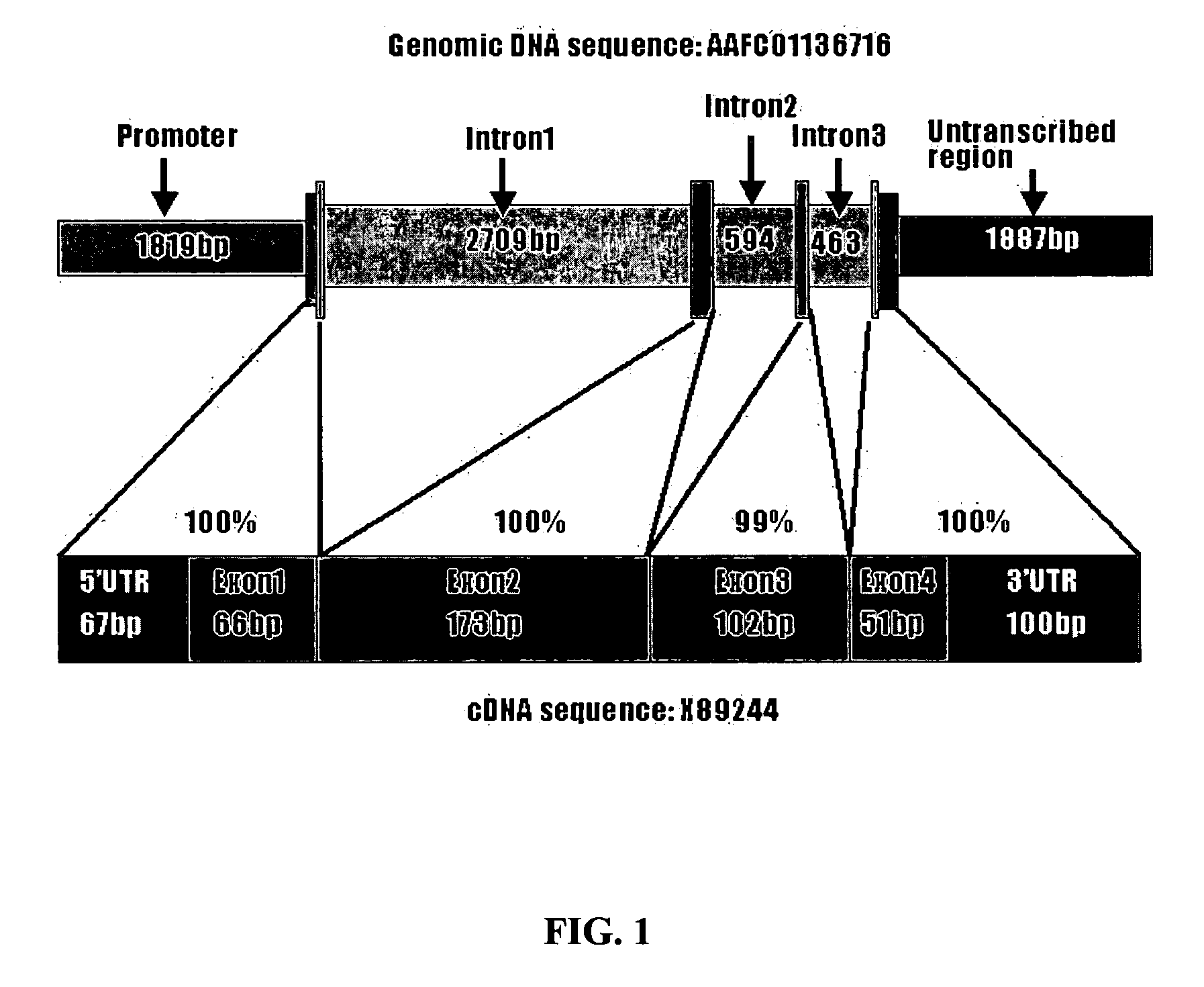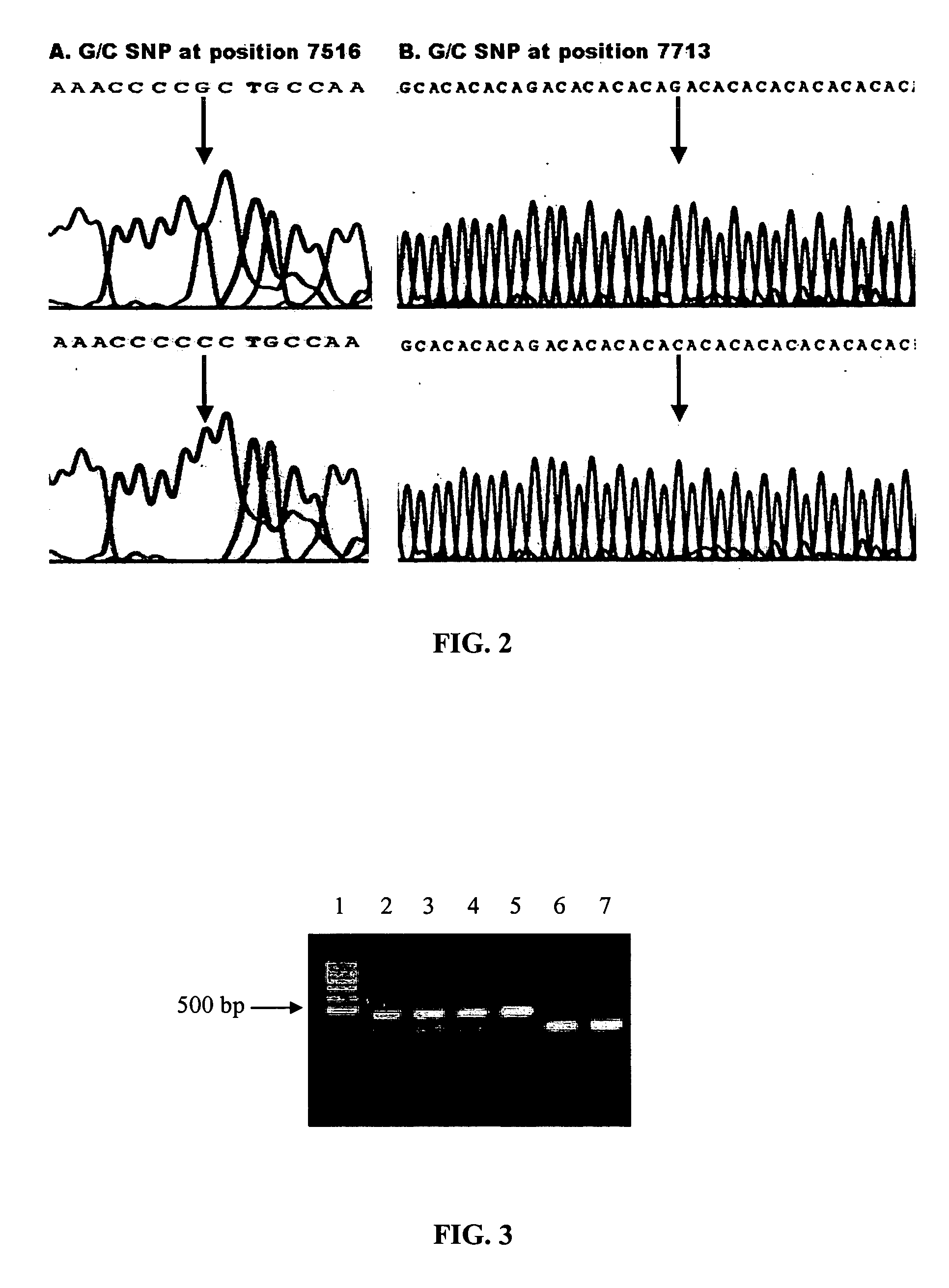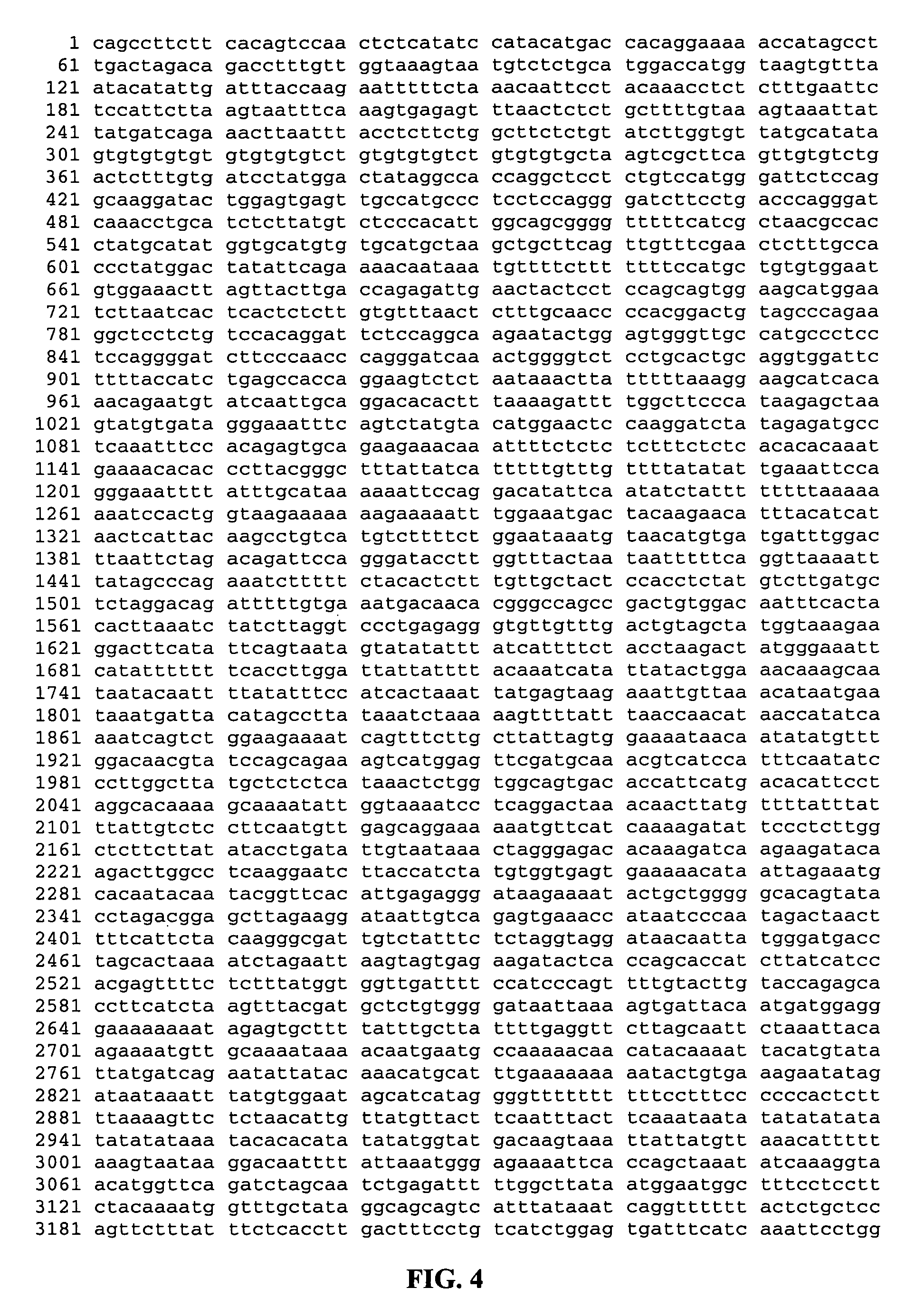Polymorphisms in fatty acid binding protein 4 ("FABP4") gene and their associations with measures of marbling and subcutaneous fat depth in beef cattle
a technology of marbling, which is applied in the field of polymorphisms in fatty acid binding protein 4 ("fabp4") gene and their associations with measures of marbling and subcutaneous fat depth in beef cattle, can solve the problems of significant political and regulatory resistance of animals and their relatives to the introduction and use of such methodologies, and methodologies are also non-inheren
- Summary
- Abstract
- Description
- Claims
- Application Information
AI Technical Summary
Benefits of technology
Problems solved by technology
Method used
Image
Examples
example 1
[0156] This Example demonstrates that the bovine fatty acid binding protein 4 (FABP4) gene is significantly associated with marbling and subcutaneous fat depth in Wagyu×Limousin F2 crosses.
[0157] Evidence has shown that the fatty acid binding protein 4 (FABP4), expressed in adipose tissue interacts with perioxisome proliferator-activated receptors and binds to hormone-sensitive lipase, thus playing an important role in lipid metabolism and homeostasis in adipocytes. The objective of this study was, therefore, to investigate associations of the bovine FABP4 gene with fat deposition in Waygu×Limousin F2 crosses. Both cDNA (625 bp) and genomic DNA (8031 bp) sequences of the bovine FABP4 gene were retrieved from the public databases and aligned to determine its genomic organization. Two pairs of primers were designed, which target two regions of the gene, one from bases 5433 to 6106 and one from bases 7417-7868 (AAFC01136716). Direct sequencing of PCR products on two DNA pools from hig...
example 2
[0180] This Example provides associations between TFAM-1, TFAM-2, and FABP4 markers and carcass traits in commercial feedlot steers and heifers.
[0181] The following markers were evaluated: (1) a C to A substitution at the 1220 nucleotide position in the mitochondrial transcription factor A gene (TFAM-1) promoter, (2) a C to T substitution at the 1212 nucleotide position in the TFAM-2 promoter and (3) a G to C substitution at the 7516 nucleotide position of the fatty acid binding protein 4 gene (FABP4). Previous results indicate that the markers affect Markers affect marbling and backfat.
[0182] Initially, there were 1,589 records initially from steers and heifers. The target endpoint was 12.2 mm backfat. Harvest date was predicted optimal economic endpoint by animal. Contemporary groups included source and sex. It was assumed that the breed type confounded with the source. The final data set included the number of records based on available phenotypes and genotypes for each trait. ...
example 3
[0186]FIG. 5 shows a flowchart of the input of data and the output of results from the analysis and correlation of the data pertaining to the breeding, veterinarian histories and performance requirements of a group of animals such as from bovines. The flowchart illustrated in FIG. 5 further indicates the interactive flow of data from the computer-assisted device to a body of students learning the use of the method of the invention and the correlation of such interactive data to present an output as a pie-chart indicating the progress of the class. The flowchart further indicates modifications of the method of the invention in accordance with the information received from the students to advance the teaching process or optimize the method to satisfy the needs of the students.
[0187]FIG. 6 illustrates potential relationships between the data elements to be entered into the system. Unidirectional arrows indicate, for example, that a barn is typically owned by only one farm, whereas a f...
PUM
| Property | Measurement | Unit |
|---|---|---|
| Mass | aaaaa | aaaaa |
| Mass | aaaaa | aaaaa |
| Mass | aaaaa | aaaaa |
Abstract
Description
Claims
Application Information
 Login to View More
Login to View More - R&D
- Intellectual Property
- Life Sciences
- Materials
- Tech Scout
- Unparalleled Data Quality
- Higher Quality Content
- 60% Fewer Hallucinations
Browse by: Latest US Patents, China's latest patents, Technical Efficacy Thesaurus, Application Domain, Technology Topic, Popular Technical Reports.
© 2025 PatSnap. All rights reserved.Legal|Privacy policy|Modern Slavery Act Transparency Statement|Sitemap|About US| Contact US: help@patsnap.com



